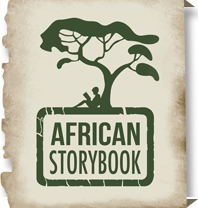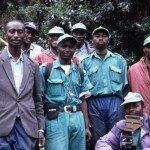



Cyanide. It’s the last chemical you’d associate with elephants at a waterhole. But that’s exactly what poachers have been using to kill these magnificent creatures in countries like Zimbabwe and Mozambique for at least three years. It’s probably happening in other countries in the region too.
 At last count, as I write on this last day of October, well over 100 elephants* have been poisoned in and around Zimbabwe’s Hwange National Park. Watching the big herd splash and sup from the same dusty bowl at the wooden hide overlooking Hwange’s Nyamandlovu waterhole, with tourists glued to their phones, binoculars and cameras, it’s hard to take it in. Cyanide and elephants just don’t belong in the same frame.
At last count, as I write on this last day of October, well over 100 elephants* have been poisoned in and around Zimbabwe’s Hwange National Park. Watching the big herd splash and sup from the same dusty bowl at the wooden hide overlooking Hwange’s Nyamandlovu waterhole, with tourists glued to their phones, binoculars and cameras, it’s hard to take it in. Cyanide and elephants just don’t belong in the same frame.
I was pursuing this ugly development while producing a recent TV insert on the fast increasing and dramatic threat to Africa’s elephant population. Poachers have been spurred on by the dramatic rise in demand for – and associated increase in the price of – ivory in China, Japan, the Philippines and Thailand.
They’re wanted as religious figurines and totems. An article in the February 2012 issue of National Geographic details the almost astonishing demand from the Catholic population of the Philippines alone. It’s food for disturbing thought.
As are the stories from a hunter I meet in Bulawayo. Although I cannot relate to hunting an animal, few people get closer to regular on-the-ground elephant encounters than hunters – and ethical hunters at least respect and value their prey. Chris Burton does his hunting in Mozambique’s Zambezi valley, and it was he who first told me of the widespread use of cyanide in that region.
 As journalists and narrators we often like to think we’re in touch with trends and developments in our field of interest. This news shocked me.
As journalists and narrators we often like to think we’re in touch with trends and developments in our field of interest. This news shocked me.
From Cameroon through central and east Africa and now heading south, the hunting network reports rampant elephant poaching across Africa. Often linked to local armed militia capable of causing widespread damage, equally disturbing is the fact that Al Qaeda affiliates are using ivory to fund their activities.
The way of our pressurized society today is that we are over-loaded with news and stuff. Everyone and every device is fighting for our attention –so much so that we won’t know about something unless we go looking for it. Much like the massive murder rate on the Cape Flats outside Cape Town, the staggering number of attacks on the elderly in the United Kingdom – and Zimbabwe’s poisoned elephants.
So it is that in Hwange the sunsets remain seductive, the elephants socialize at the waterholes, the big cats bring down their prey and the jackals trot around the periphery, on the lookout for the proverbial opportunity. The circle of life continues.
That’s the thing about Zimbabwe. Despite the dictatorial rule and often brutal crackdowns on any expression of public discontent, it’s ironically a disarmingly safe place to visit – more so even than South Africa. Granted, for us it was a bit tense as we weren’t meant to be there, and couldn’t be seen filming, but the tourists we met were simply on safari.
 Whether the local honeymoon couple or the visitors from the USA, by the looks of it they were loving it, swimming the pool, going out on private game drives and sharing tales of who-saw-what at dinner afterwards. With mosquito nets draped over the beds, a swimming pool, perfect sunsets and waiters on call, the answer to why tourists enjoy safari lodges is not a difficult one.
Whether the local honeymoon couple or the visitors from the USA, by the looks of it they were loving it, swimming the pool, going out on private game drives and sharing tales of who-saw-what at dinner afterwards. With mosquito nets draped over the beds, a swimming pool, perfect sunsets and waiters on call, the answer to why tourists enjoy safari lodges is not a difficult one.
Zimbabweans – in contrast to the Batswana, for example – have long been known for their friendliness and hardworking natures. The fact that they remain so – despite the consistently rigged elections and associated woes of the last 12 years – makes them quite remarkable and the situation somewhat tragic. But it is what it is and life goes on.
Being on the US dollar and South African Rand for the last couple of years the economy is functioning, as opposed to 2008 when there was no food in the shops and available petrol was a luxury. However it’s still a good idea to fill your tank when in a city.
We slept at a place called Ivory Lodge, a concession just outside the park (Hwange) proper. From an accommodation perspective the main difference is that it’s more private than the park and exceedingly comfortable.
 As for the wildlife, while Ivory does have it’s own waterhole that attracts parched creatures in the increasingly dry months before the rains, the waterholes in Hwange itself have been attracting the elephants since they were first built in the 1930s. In fact, locals tell me Hwange waterholes like Nyamandlovu were built where the elephants came to source the sodium (salt) – in what is known as a salt-lick – which is essential to their diet (it was such waterholes that were laced with cyanide).
As for the wildlife, while Ivory does have it’s own waterhole that attracts parched creatures in the increasingly dry months before the rains, the waterholes in Hwange itself have been attracting the elephants since they were first built in the 1930s. In fact, locals tell me Hwange waterholes like Nyamandlovu were built where the elephants came to source the sodium (salt) – in what is known as a salt-lick – which is essential to their diet (it was such waterholes that were laced with cyanide).
So where they once would’ve passed through, now they stay, giving rise to the notion that there are too many of the animals. A gent who’s been involved with aerial surveys of Hwange’s elephant population for a few decades tells me there could be anything between twenty 40 000.
Either way it may sound like a lot, but we have to consider that these populations are highly mobile – with a number of them moving across borders to countries like Botswana and Zambia. And that Africa is losing 5% of its elephant population every year, with poaching rampant to the north and east – Tanzania having ‘officially’ lost 100 000 – half its estimated population – in the last decade alone.
Which is what reminds me of the enormous privilege it is to observe Africa’s elephants. Whether a family herd gathering at the end of a day or a trio of bulls being vaguely destructive.
 From my chalet verandah one night I watched a pair of elephant madoda (Zulu for bulls) drinking at the lodge waterhole. With nothing but the odd nightjar calling, the sound of their slurping and rumbling was amplified tenfold. Briefly away from the ugly story of cyanide, it was a good place to be.
From my chalet verandah one night I watched a pair of elephant madoda (Zulu for bulls) drinking at the lodge waterhole. With nothing but the odd nightjar calling, the sound of their slurping and rumbling was amplified tenfold. Briefly away from the ugly story of cyanide, it was a good place to be.
* I have it on good authority that the reported figures of 300 appear were an emotional thumb-suck by a well-meaning but understandably awe-struck bush-pilot flying over those countless carcasses first seen in the reserve.

Recent Posts
Archives
Categories
Recent Comments
About Angus Begg
Angus is serious about his craft. A CNN award-winning television producer, he was the first South African broadcast journalist to report from the chaos of Somalia in 1992.
He went on to cover the Rwandan genocide of '94 and South Africa's first democratic elections the same year, for which he was nominated for the national public service radio awards.
It was these episodes in Somalia and Rwanda that took him the roundabout route to the fields of travel and environment, in which he now writes, produces and photographs.
Portfolio
Latest tweets
-
@angusbegg
@kevinleosmith @angusbegg cryptic straight back at ya kevin - CPIC? Not in a google mood, sorry.
-
@angusbegg
RHINO poaching. Here's a good reason to get a copy of iRhino. http://t.co/eVt9bmiJSP If you wish to know why such gangs have been allow…
-
@angusbegg
@rhinorevolution An essential resource. Download 'iRhino: The Full Story'. http://t.co/TNJ2rqP59J. Saffers buy a bracelet, get the iBook.





